Ever looked at those ancient Greek statues and paintings and wondered, hey that’s not a bad-looking hairstyle?
No? What about Brad Pitt in Troy? Or Gerard Butler in 300? The Greek hairstyles for men in those movies were inspired by actual Grecian styles of the era.
And look how awesome it looked on them!
Related: Classic Hairstyles for Men
Related: Hairstyles For Men with Long Hair
The fun thing about these ancient Greek hairstyles for men and women is that they have a very timeless appeal.
So you can easily modify them to suit the present-day fashion trends.
Let’s have a look at some of the Greek hairstyles for men and women and see what they are all about.
In this article, I’ve discussed the history and tradition surrounding these hairstyles and also given you modern versions of ancient greek hairstyles that you can try.
Page Contents
Greek Hairstyles 2021
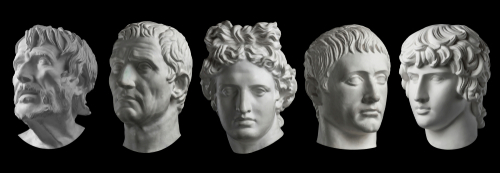
A lot of people think the ancient civilizations didn’t pay attention to hairstyles, fashions, adornments, etc. And they are absolutely wrong!
Greek society was big on fashion and style, not unlike us today. And hair wasn’t just for decoration, it was a status symbol.
A person’s hairstyle in ancient Greece would reflect the following things:
- Class
- Social Position
- Age
It was through hair that noblemen and merchants were distinguished from slaves. And through hair that warriors were marked out from the rest.
Men’s Hair
Men in ancient Greece usually wore their hair long.
Kids wore their hair long or short, but after a certain age, all boys were expected to wear their locks at jaw or chin-length.
They could start growing their hair when they were more distinguished in society.
Only enslaved people in Ancient Greece wore their hair cropped to their scalp. It was one of the ways of distinguishing the enslaved classes and the free citizens of Athens or Sparta.
Men also started growing their beards when they held high military positions or offices in government.

Facial hair was considered to be a sign of masculinity and virility, so almost every adult male had beards in that era.
However, the style of keeping long facial hair ended for most young men when Alexander the Great forbid them from growing beards and wouldn’t wear one himself.
He didn’t want any enemy soldier to grab hold of a beard during a battle! Interesting right?
But still, men who were more inclined to academic pursuits like sages and philosophers still had long, flowing beards.
Apart from these styling their hair in different haircuts, men of Ancient Greece also wore diadems, headbands, etc.
You might have seen Greek heroes wearing the popular wreath of olive leaves around their heads in movies and TV shows. That was another popular accessory for men.
Apart from these wreaths, which was mostly used by noblemen and princes, men also wore skull caps, leather fillets, and other headbands.
Krylon
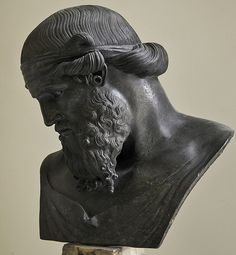
The first of the many Greek hairstyles for men is a type of up-do style called the Krylon.
Here, the hair was gathered into a knot, tied together, and pinned above the head in an updo style.
If you think that this style isn’t feasible for the 21st century, let me remind you of the famous man bun!
Yes, the Krylon wasn’t too far from today’s men’s hairstyles such as ponytails or buns.
A lot of warriors and soldiers wore this style for practicality.
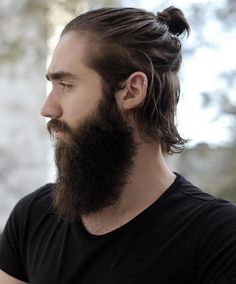

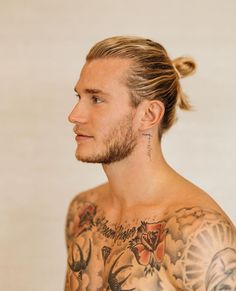
Kepos
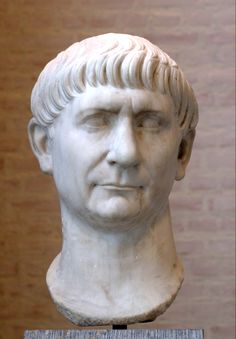
Does the Kepos look familiar to you? Of course, it does! It’s very similar (or perhaps the same) as the bowl cuts of today!
The Kepos were initially worn by small boys and slaves. But by the time the 6th Century rolled out, the men started wearing their hair shorter as well.
So you could see young men with Kepos who were often clean-shaven as well, following the example of Alexander the Great.
But older men could still be seen with long hair during this period.
Here are some examples of Kepos that you can wear in the 21st century.

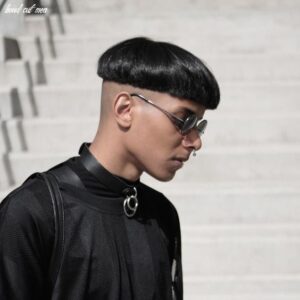

Theseid
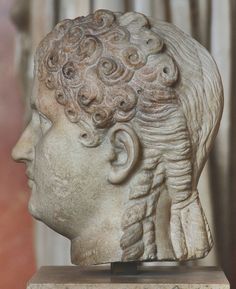
Another of the Greek hairstyles for men that might look familiar to you is the Theseid.
This hairstyle was typically short at the front and longer at the back. So the Theseid was a sort of ancestor of the 80s mullet.
Here are some modern-day versions of the Theseid or the proto-mullet that you can try out.
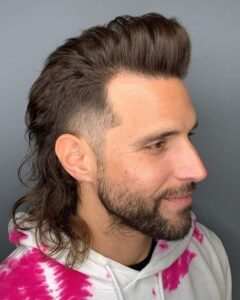


Hectorean

A lot of Greek men and women had natural curls. And even if they had long, straight hair, heated tongs would be used as a substitute for the modern-day curling iron.
The Hectorean was another such Greek hairstyle for males that was really popular.
Here the medium-length or longer curls would be combed back behind the ears.
Check out some hairstyles for men that resemble the Hectorean style below:
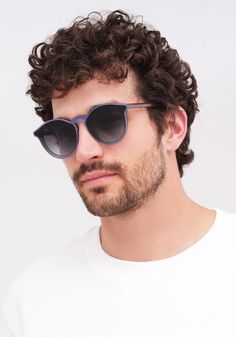

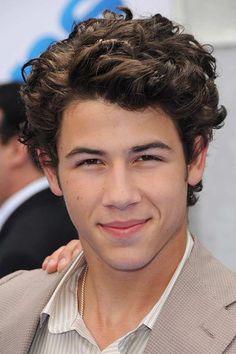
Slave’s Hair
People who were enslaved always wore their hair short, whether they were men or women.
Until the 6th Century when Alexander the Great made short hairstyles and a clean-shaven face fashionable for men, only little boys would go about with short styles and no facial hair.
Women who had lost their husbands and were in mourning were also expected to cut their hair short.
They could grow it back out again when they came out of the mourning period.
Enslaved people who had been set free by their masters could also wear their hair in whatever styles they wanted.
Women’s Hair
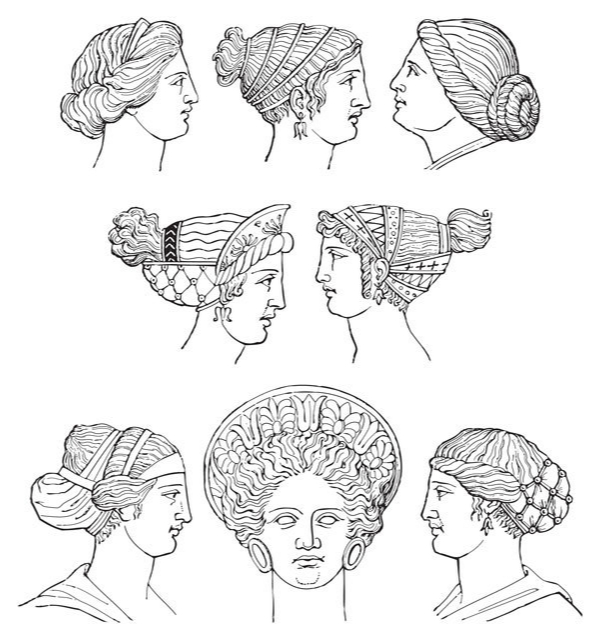
Women in ancient Greece would wear their hair long and it would be allowed to grow past their shoulders and down their backs.
Early Greek society was very androgynous, so you’d see men and women both sporting similar hair lengths and letting their curls or straight hair flow down their shoulders.
But later on, there was a distinct change in the way men and women styled their hair.
Long, flowing tresses were considered a symbol of femininity and fertility. While men, especially soldiers, started wearing their hair short for practicality in battle.
Until the Hellenistic era, women wore their hair curled, plaited, or loose down their shoulders held together by certain adornments.
These headbands were given several names, such as:
- Mitra
- Tainia
- Ampyx
- Anadesme
Noblewomen, princesses, and other female members of the ruling family worn ornate headdresses called the Stephane.
These styles were inspired by oriental and Persian fashions. But with the defeat of Persia in 449 BC, these kinds of hairstyles for women grew less popular.
After a point, women started pinning their hair in a knot at the top of their heads. These buns or chignons were adorned with a headband or a net.
In the 5th Century, wore a scarf covering their entire head called the Sakkos.
Some women wore a shorter version of the Sakkos called the Spherdone, which was essentially a broad headband or bandana.
There were also subtle differences in the way the social classes affected women’s hairstyles.

A lot of rich women would wear elaborate braids and put on jewels and tiaras on top of their heads.
But women who belonged to the middle class and lower merchant classes needed to be more practical with their locks.
So their tresses would often be adorned with just a ribbon or a leather fillet and tightly wound into a bun.
Hair coloring was also very popular in the Ancient Greek period. Men and women both dyed their hair.
For women, the Greek goddess Aphrodite and queen Helen of Troy were the ideals of beauty. .
And since both women were depicted as having blonde hair, this hair color was all the rage among women.
Potash water and other herbs were sometimes used to dye hair or bleach it. And men and women tried dying hair in the sun to make it a lighter color as well.
FAQs – Greek Hairstyles For Men and Women
What was the hair type of ancient Greek people?
Almost all statues, paintings, and sculptures from the Ancient Greek era show hair to be curly. A lot of ancient Greek people had naturally curly hair.
In a passage from Homer’s Odyssey, a classic Greek play, the hero Odysseus’ hair is described to be as “hyacinthine curls”, which shows that the person likely had natural type 3 or type 4 hair textures.
Even if someone hair wavy or straight hair, it was considered fashionable to have curls.
Heated tongs were used to make hair more curly. But naturally Greek people have curly, coily, and thick hair textures.
How did the greeks do their hair?
When it comes to men, the Greeks had four main types of hairstyles:
- Krylon – updos
- Kepos – a bowl-cut
- Theseid – a proto-mullet
- Hectorean – combed back curls
Women in ancient Greece wore their hair long and curly and tied back with either a headband, a scarf, or a diadem. They also wore elaborate headdresses.
Ancient Greek was strict on hierarchy and social rules, so most of the hairstyles you can see back were a reflection of this status.
But now these rules don’t matter!
And you can take inspiration from these ancient Greek hairstyles for men and women and come up with your own take on these styles.
These aren’t just a great option for Halloween or themed parties, you can successfully wear a lot of these hairstyles every day.
Also Read:
Professional hairstyles for men
Braided hairstyles for black men

Helen is committed to bringing you the latest popular hairstyles, hair care tips, and hair-related products. You can check more of her work on besthairlooks to find fashion inspiration, product reviews, tutorials and more!
